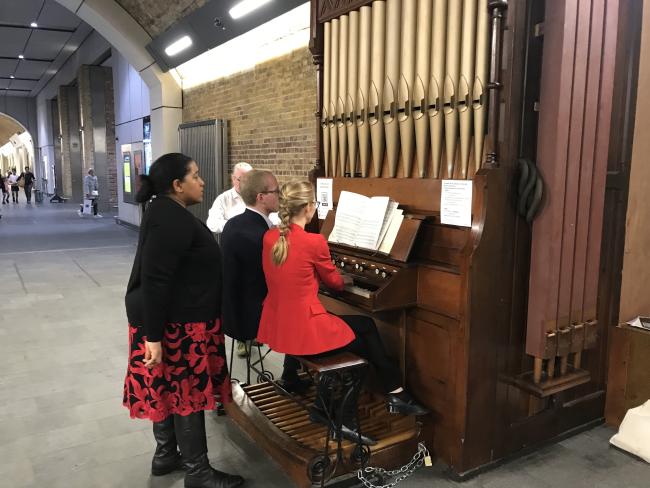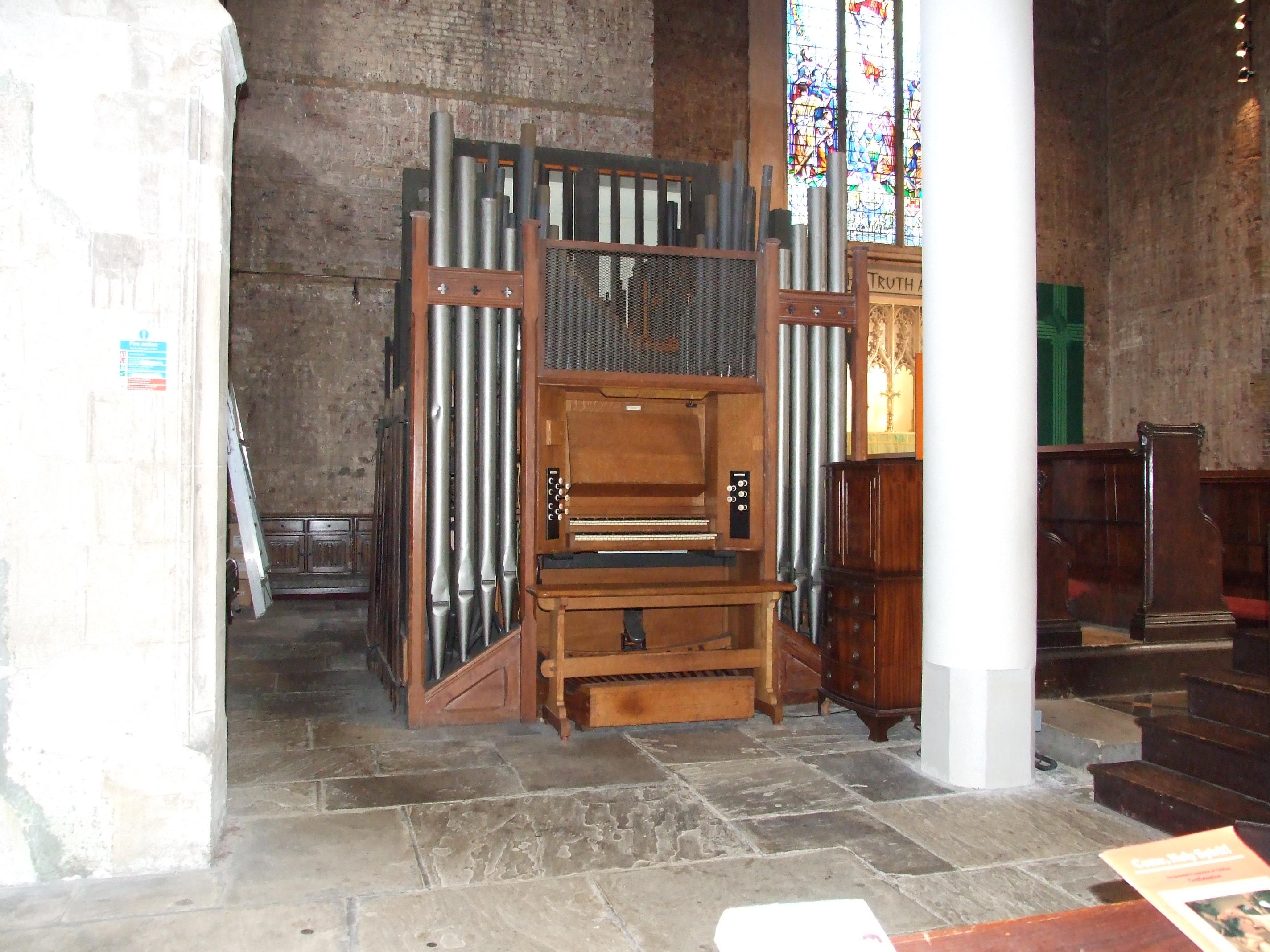As members of the group of organ activists featured in the recent BBC 4 documentary “Organ Stops”, writes George Allan, Chair, Pipe Up for Pipe Organ, we have wasted no time in getting to grips with the scale of the challenges exposed in the film.
Our task is immense. An estimated four pipe organs a week are being smashed up and sent to landfill. A tiny number are recovered and either stored or moved to new homes, sometimes abroad. One church a day is now closing.
Last July, we registered a new charity, Pipe Up for Pipe Organs, which has been carefully set up to help organs facing destruction. It is now busily trying to find new homes for unwanted organs, and inquiries are coming into its web site at www.pipe-up.org.uk
Organ on London Bridge station
Also last July, we moved a rescued 1880 1-manual organ onto the concourse of London Bridge station, for the public to play (pictured below). This was intended to introduce the public to the authentic hands-on experience of playing a pipe organ and it has been an unqualified success, with hundreds of railway travellers, most of them entirely new to organs, sitting down to enjoy the experience, as many more listen. We are now looking for further stations and public places where pipe organs could be installed.

It’s not just magnificent, historic pipe organs that Pipe Up is interested in. It is worthwhile pipe organs of every sort. As the film showed, even the humbler organs found in smaller churches have a unique place in our musical heritage, not merely to accompany hymns but also as a vital gateway to the whole world of choral music. Many communities worked hard to raise the funds for these instruments, and their loss diminishes the musical and cultural life and opportunities of everyone in the area.
Locked-up churches
A further task for Pipe Up will be to enable organists and pianists to play some of the many underused and neglected pipe organs in locked-up churches accessible only on a Sunday. It plans to do this by making it easier for organists to book time on pipe organs, and by getting the sleeping giants back into use with grants for the routine care and minor repairs that are all that some of them need to get them back into use.
Last winter, Martin Renshaw and I worked in a vast inner-London Anglican church on its massive 1881 Walker organ, which had not been played or maintained for more than 30 years. Services there were accompanied by a twangy piano.
We found that two ranks of organ pipes had collapsed and air was leaking out everywhere it shouldn’t. But after a day’s work adjusting, patching and fiddling, we got much of it working again and it is now in regular use once more, filling the magnificent space with the sort of music that lifts, inspires and moves the soul in a way other music, in my view, just can’t.
That’s what Pipe Up is about.

